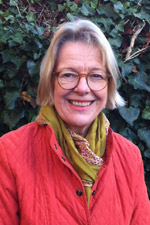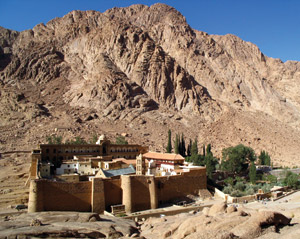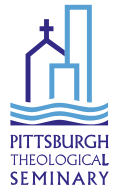 Join us Tues., Dec. 17, 2013 at 7:30 p.m. for the archaeology lecture “Sisters of Sinai: The Incredible Lady Bible Hunters” presented by Janet Soskice from the University of Cambridge.
Join us Tues., Dec. 17, 2013 at 7:30 p.m. for the archaeology lecture “Sisters of Sinai: The Incredible Lady Bible Hunters” presented by Janet Soskice from the University of Cambridge.
Come hear Janet Soskice, professor of Philosophical Theology at the University of Cambridge and a Fellow of Jesus College, recount the fascinating story of Agnes and Margaret Smith. In an era when most Westerners—male or female—feared to tread in the Middle East, they slept in tents and endured temperamental camels, unscrupulous dragomen, and suspicious monks to become the unsung heroines in the continuing effort to discover the Bible as originally written.
 Agnes and Margaret Smith, twin sisters from Scotland, distinguished themselves among all biblical scholars of the Victorian period. Raised by their father, widowed two weeks after their birth, the well-educated pair became fluent in German, French, Italian, and Greek. Prompted by their love of adventure and news of the discovery of a fourth-century New Testament manuscript (the Codex Sinaiticus) by Constantin von Tischendorf in 1859, the Smiths began studying Syriac and Arabic. In the early 1890s, they traveled to Athens, then to Saint Catherine’s monastery in Sinai. There, in 1892, they made one of the most important manuscript discoveries of the era—the earliest known Syriac version of the Gospels. In 1893, they and accompanying scholars returned to Sinai, transcribed the entire manuscript, and catalogued the monastery’s complete library of ancient Syriac and Arabic texts. The famous manuscript became known as the Sinaitic Palimpsest, since it had been copied over the Lives of the Saints, an earlier Syriac manuscript by John the Recluse.
Agnes and Margaret Smith, twin sisters from Scotland, distinguished themselves among all biblical scholars of the Victorian period. Raised by their father, widowed two weeks after their birth, the well-educated pair became fluent in German, French, Italian, and Greek. Prompted by their love of adventure and news of the discovery of a fourth-century New Testament manuscript (the Codex Sinaiticus) by Constantin von Tischendorf in 1859, the Smiths began studying Syriac and Arabic. In the early 1890s, they traveled to Athens, then to Saint Catherine’s monastery in Sinai. There, in 1892, they made one of the most important manuscript discoveries of the era—the earliest known Syriac version of the Gospels. In 1893, they and accompanying scholars returned to Sinai, transcribed the entire manuscript, and catalogued the monastery’s complete library of ancient Syriac and Arabic texts. The famous manuscript became known as the Sinaitic Palimpsest, since it had been copied over the Lives of the Saints, an earlier Syriac manuscript by John the Recluse.
Financially independent, Agnes and Margaret began their great adventure when they were middle-aged and without earned university degrees. But their ensuing academic work tremendously benefited New Testament studies. They were instrumental in discovering the famous Cairo Geniza, and they traveled and published their own editions of texts until World War I. Numerous universities (Halle, Heidelberg, Dublin, St. Andrews) awarded them honorary degrees, including the first doctorates in theology granted to women. The sisters founded a new academic series through Cambridge University Press—Studia Sinaitica—and established Westminster College in Cambridge and the Presbyterian chaplaincy to the University of Oxford.
The Kelso Museum of Near Eastern Archaeology will be open from 6:30-7:15 p.m. and after the lecture. The lecture and reception to follow are free and open to the public.
